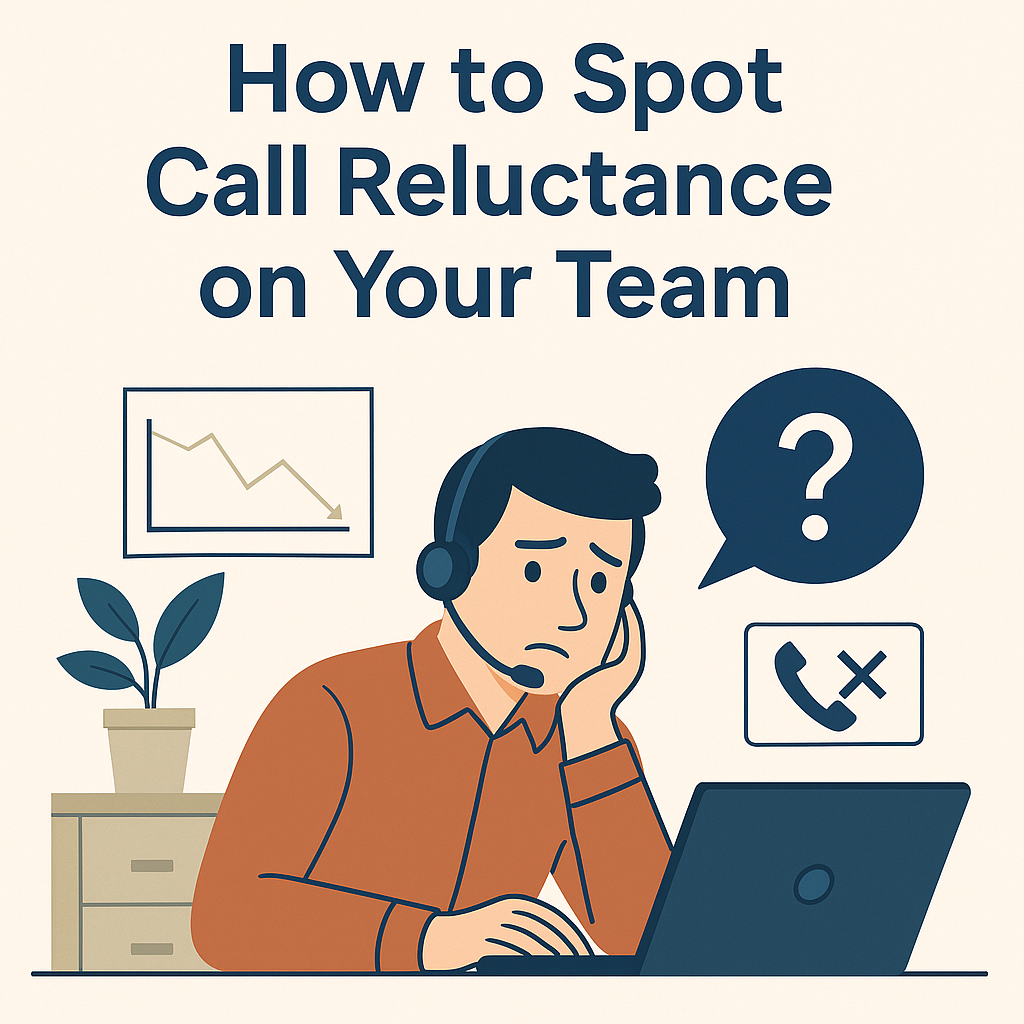How to Spot Call Reluctance on Your Team Before It Costs You
Call reluctance is the silent killer of sales performance. It doesn’t shout, it whispers, through missed follow-ups, over-preparation, and endless research. For sales leaders, the danger is real: call reluctance doesn’t just hurt productivity. It quietly bleeds revenue.
If you wait to address it until results crash, it’s already too late.
Here’s how to spot call reluctance early, before it drains your pipeline and damages team morale.
1. Look Beyond the Numbers
Quota misses are often a symptom, not the root issue. Reps struggling with call reluctance can hide in the metrics. They may still hit activity goals, emails sent, meetings scheduled, but avoid the real work of phone outreach.
Watch for:
Low call-to-connect ratios
High email usage with little phone engagement
Inconsistent prospecting effort, especially early in the day or week
The numbers don’t lie, but they often need interpretation.
2. Notice Over-Preparation
Call reluctance often masks itself as “doing the work.” Reps may spend hours researching accounts, building perfect outreach sequences, or rehearsing scripts, without ever making contact.
While preparation is important, it can easily become a form of avoidance.
Ask yourself:
Are they always “almost ready”?
Do they need one more tweak before making the call?
Is their planning disproportionate to their execution?
If you hear a lot of “just getting organized,” it’s time to dig deeper.
3. Pay Attention to Time Management
Fear doesn’t always show up as panic. It often looks like distraction. Reps with call reluctance tend to fill their day with busywork that feels productive but avoids the risk of rejection.
Common red flags:
Endless CRM updates or data entry during prime calling hours
Starting outreach too late in the day
Prioritizing low-stakes tasks over prospecting
Check their calendar. If outbound activity is squeezed into the margins, reluctance may be driving the schedule.
4. Listen for Emotional Cues
Call reluctance is rooted in emotion. It’s rarely about skill or strategy. Pay attention to how your reps talk about prospecting.
You might hear:
“I don’t want to bother them”
“They probably won’t answer anyway”
“I’m just not good on the phone”
These statements aren’t excuses. They’re insights into deeper fears, fear of rejection, fear of sounding unprepared, fear of looking unprofessional.
Coaching starts with listening. If you hear hesitation, dig in.
5. Watch for Perfectionism and Control
Some reps are high performers on paper, but they rely heavily on inbound or warm leads. They resist cold outreach unless everything is dialed in.
What this looks like:
Delaying outreach until scripts are perfect
Refusing to call without full contact data or context
Constantly refining messaging instead of testing it live
High standards are great. But when perfection becomes a prerequisite for action, fear is in charge.
6. Track Confidence, Not Just Competence
Your best closers might also be your most reluctant openers. Just because a rep can sell doesn’t mean they’re comfortable with the start of the sales process.
Do they:
Avoid roleplays?
Default to email even when a call would be more effective?
Struggle with first contact more than follow-up?
This gap between competence and confidence is where call reluctance often hides.
What to Do About It
Spotting call reluctance is only step one. Solving it requires more than motivation or another script. You need to create a team culture where outreach is expected, supported, and safe.
Start with:
Psychological safety: Make it okay to fail forward. Encourage call reviews that teach, not punish.
Micro goals: Reduce fear by focusing on activity over outcomes. Let reps build consistency before perfection.
Mindset coaching: Help reps understand the root of their hesitation. Fear-based behavior needs a different approach than skills-based gaps.
Lastly
Call reluctance isn’t about laziness or lack of talent. It’s about fear. And fear thrives in silence.
As a sales leader, your job is to see what others miss, to coach not just activity, but behavior. The sooner you spot call reluctance, the sooner you can shift your team from hesitation to momentum.

